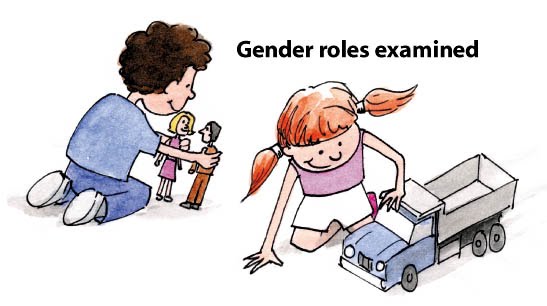The Psychology of Sex, Why Men are Attracted to Women
What attracts males to females?
Let’s start by saying men are attracted to ladies that are independent, have impressive bodies, and are of high status. But there is a wide variety of different males out there that attract some of them to different things.

What attracts males to females is a question asked for centuries. The answer is rather complex, but they can divide it into three categories.
A: The category of attraction would be biological. This category is based on the process of evolution and is found in various animal species.
B: The second category of attraction would be personality-based. This area is more complicated as it requires an understanding of psychology, personality theories, and type theory.
C: The third category of attraction falls under the realm of social norms and cultural expectations.
A study published in the Journal of Personality and Social Psychology revealed that women find men more attractive if they are wearing a red shirt.
They found in the study that this is not just true for women of a particular age, but for both genders. When someone dressed more sexily than they are, it will attract them.
what is the Difference Between Sex and Gender?
One way to think of the difference between sex and gender is that sex is how we are biologically born, while gender is our sense of personal identity.
Sex refers to a person’s biological or anatomical differences, whereas gender refers to social differences. It means that one’s sex will always be the same (male or female), but their gender can change.
-Sex refers to the biological and physiological characteristics of males and females, including their chromosomes, hormones, internal and external genitalia.
-Gender refers to a social construct based on the way one identifies with their sex.
The psychology of attraction sometimes looks complicated. It helps to consider the biological sex differences and psychological gender identity when trying to understand the attraction.
Sex is a biological term that describes the physical differences between males and females. There are two categories: male and female.
Sex is what you are born with. It cannot change later on in life.
Gender is a social construct. It is society’s expectations of what males or females should look like, act like, or be like.
Gender expression is how someone outwardly expresses their gender through behavior, clothing, or hairstyle.
Sex refers to either the physical attributes by which females and males are distinguished (e.g., external genitalia) or the biological distinction itself, the difference between females and males (e.g., YY vs YZ).
Biological sex may also refer to differences in chromosomal make-up that lead to physiological differences between sexes and gender.
Gender Roles and Socialization
Socialization plays a role in our understanding of gender roles.
Let us use children for this illustration.

We introduced children to different gender roles and assigned them different activities which describe the gender roles.
For example, the doll experiment is a well-known experiment on socialization. It revolves around children’s behavior and the effects they have on their gender-related behavior.
We explain the experiment below.
Many factors go into what helps shape the way we view gender roles and socialization. When parents assign genders at an early age, it has a lasting effect on how we act throughout our lives as adults. One of the first experiments that helped this idea was the doll experiment conducted by Dr. Lise Eliot from 2003 to 2011.
The doll experiment often shows that children given dolls of different colors will not just play with them but also prefer to associate with other children of the same color. This suggests that color preference is not just about what they see, but what they have been taught.
Another example would be how boys are more likely to develop spatial skills and girls are more likely to develop language skills.
Note: Human brain processes genders differently, which affects how we act and think about others’ actions.
Men can make mistakes and seem competent while women need not make any mistakes for others to see them as less competent than men.
In the late 1800s, social scientists became interested in “imitative behavior.” What a person does is learn from significant others. We also know this as socialization.
There have been many studies on gender roles and socialization in the past few decades. One famous example of these studies is a doll experiment conducted by a psychologist named Anne Marie Kirlian.
The first part of the experiment was a test of how quickly and accurately children could pick out the correct gender for a set of dolls. When given six dolls, all dressed differently, 100% of girls under age 5 chose the girl doll.
The second part was an exploration of which gender roles children preferred. The first question was: “If you had to choose, which do you think is better – being a doctor or being a nurse?” From there, they asked questions about other careers.
What they found most interesting is that many little girls were not just choosing female roles but strikingly preferred them at an astonishing rate higher than boys (going as high as 80% in some age groups).
This disproved Freud’s theory that women become less interested in traditionally feminine tasks by adolescence.
Today, research has shown that the social environment shapes a child’s gender identity. The role models expose them to society, the toys they gave, and the clothes they wear all impact the way children establish their gender identity. This can be especially true for kids who identify more with the opposite sex than their biological sex.
The experiment called “Dolls for Development” tested this theory.

In this experiment, there were two sets of dolls with different appearances that were given to children from a culture where boys usually play with cars and girls play with dolls. The first set had a typically feminine appearance and usually masculine role models, like doctors or scientists; while the other set had the typically masculine appearance and female role models like teachers or nurses. They observed children influenced by what they see and what they learn. When girls picked dolls and boy’s trucks, it is natural that their future aspirations will differ.
The doll experiment is an innovative way to study children’s responses to toys. It provides a new perspective on how gender roles influence socialization in our society.
Physical Attraction and Sexual Selection
Physical attraction is often a factor in mate selection that can attribute to sexual selection.
Physical attraction is the basis for physical and emotional triggers that encourage animals to reproduce. Humans have grown to rely on physical attractiveness as a sign of health, genetic quality, and fertility.
Physical attraction is a basic instinct. It attracted us to certain features, colors, and scents that we find alluring.
Physical attraction is a primal instinct, often dictated by biology. It’s not about logic or reason; it’s about the visceral and the material.
Roles of physical attraction in mate selection.
Physical attraction plays a big role in finding a mate. Men show physical attraction to women by making more “eye contact, speaking in a deeper voice, and standing taller” than they would speak with just friends.
Women show physical attraction to men by smiling more, maintaining eye contact, and moving closer.
We believe that humans have developed over time to do this because some people are physically healthy and can reproduce, which means they will pass on their genes.
Evolutionary Psychology of Male-Female Relationships
Human males and females have been around for a long time, a lot of evolutionary psychology is based on the human male-female relationship. There are still many unanswered questions, but evolutionary psychologists are trying to find out more about the evolution of sex differences.

One question often asked is why there is an unequal ratio between males and females in our society. We know that there are more boys than girls who are born- this means that from birth we have an over 50% chance of being male. This leaves us with many unanswered questions about why these ratios exist, but it gives us some insight into how human evolutionary psychology works.
The outlook for human males and females has changed drastically over the past few decades. As new technologies have come about, this also affects association and reasoning.
They build human behaviors on the evolutionary psychology of males and females.
We will explain why men and women act the way they do about each other. We will take a traditional evolutionary perspective to understand what might have been going through our ancestors’ minds when they were forming a family.
Evolutionary Theory” is a scientific theory that explains why humans have unique characteristics and behaviors today. These differences are due to how our ancestors behaved thousands of years ago- when our current species formed from primates.
Evolutionary psychology is the idea that the human brain and body developed to solve problems in the ancestral environment over millions of years. It provides a different perspective on our behavior by comparing aspects of our physiology, psychology, and culture with those of other animals.
The evolutionary perspective has heavily influenced how we have studied relationships for decades.
The evolutionary perspective is based on the idea of natural selection, and evolution shaped the psychological tendencies of human beings.
Evolutionary psychologists have postulated this theory of why males and females exhibit different behaviors.
Evolutionary psychology can also apply to male-female relationships. One such explanation for this is that men are more aggressive because they grew to pursue females. Men would find it more difficult to protect their families if they did not earn resources from hunting or fighting with other males. This means that men grew to be less nurturing because doing so would lead them to miss out on opportunities for acquiring resources.
Last Updated on August 20, 2022 by kingstar

